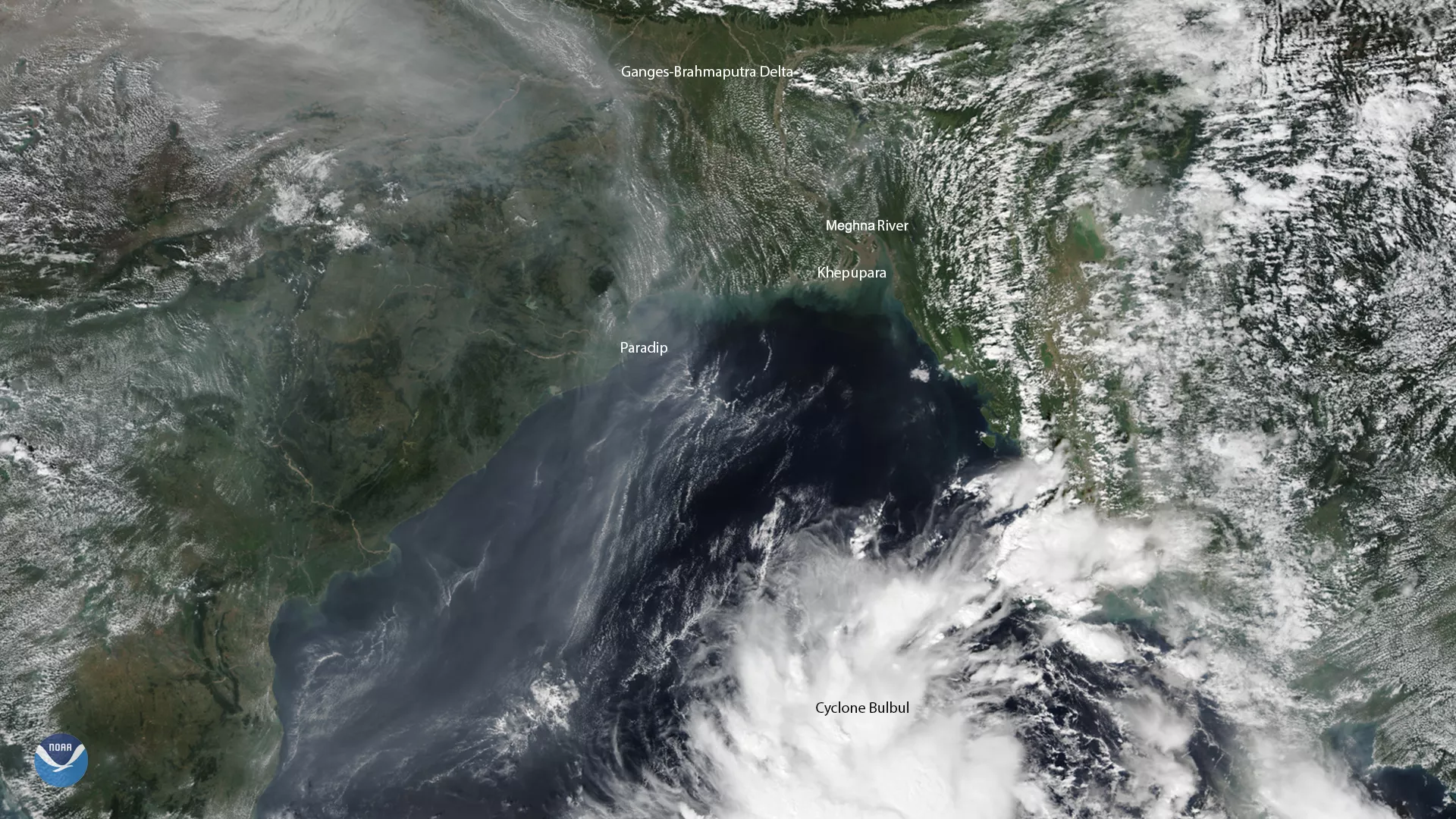
On Nov. 6, 2019, NOAA-20 captured this image of Bangladesh and the Bay of Bengal at the onset of Cyclone Bulbul, which has made its way across the Indian subcontinent over the past two days. The India Meteorological Department has issued a bulletin on the developing cyclone, stating that it has been moving northwest over the Bay of Bengal at a speed of 13 mph. Currently, Cyclone Bulbul is centrally located 347 miles south of the Indian city of Paradip and 460 miles southwest of Khepupara, Bangladesh.
The State Department has issued a Level 2 (Danger) warning for the coastal area on Nov. 7 and stated that residents and travelers to the area should be prepared for heavy rains. The Indian Meteorological Department anticipates that Cyclone Bulbul will intensify into a Severe Cyclonic Storm during the next 24 hours, initially moving north-northwestwards and then back northeast towards Bangladesh and West Bengal. However, the US Embassy in Bangladesh stresses that “it is too early to know precisely its eventual strength or where it will make landfall.”
In the NOAA-20 capture, there is significant smog cover being swept up into Cyclone Bulbul, and in the north, the Meghna River and its tributaries show significant silt deposits and eroded embankments as residual effects of Bangladesh’s recent monsoon season. The river complex has over two-thirds of its total 518 miles within Bangladeshi borders; the Ganges-Brahmaputra-Meghna Delta is home to over 140 million people who are “highly vulnerable to the effects of sea-level rise” and the increased weather severity in the region.
This image was captured by the NOAA-20 satellite's VIIRS instrument, which scans the entire Earth twice per day at a 750-meter resolution. Multiple visible and infrared channels allow it to detect atmospheric aerosols, such as dust, smoke and haze associated with industrial pollution.
